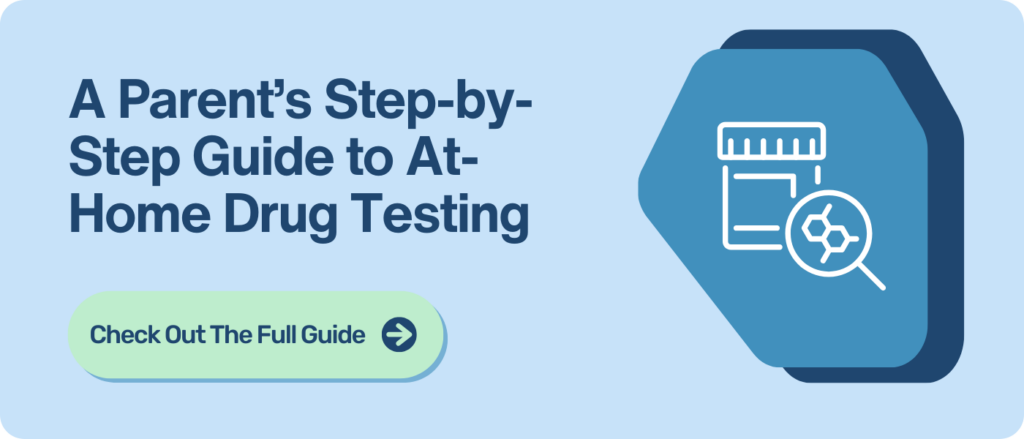Step 1: Check For Hiding Places
Before handing your child the test, check their pockets and have them take off extra clothing layers. You want to make sure they are not bringing anything into the bathroom with them.
Step 2: Set Expectations
When you hand your child the testing cup, remind them that they cannot flush the toilet or wash their hands until after they have given you the test back. After they give you the cup they can return to the bathroom, flush, and wash their hands. This is an important step to limit potential that tests are being deluded or tampered with. You do not need a lot of urine for the test, just enough for it to reach the test strips.
Step 3: Stay Close
Remember, once you ask them to take the test, stay with them until they take that test, even if just outside the bathroom.
Step 4: Read The Results
Once you have the cup, you can begin looking at the results. We recommend reading results out of sight of your child if possible.
Temperature Reading: Some cups have a temperature reading on the cup. The sample should be between 90-100 degrees. It is important to read this result within 2-4 minutes after collecting the sample. Even if it doesn’t have a temperature reading, when the cup is handed to you, you are looking for the sample to feel body temp. Not too hot and not cold.
Results: When interpreting results, look at the lines for every test strip.
- Positive: ONE control line indicates a positive result.
- Negative: TWO lines indicate a negative result. This means two lines no matter how faint the second line is.
- Invalid: If you see no lines or a missing control line on the test strip, that means the test is not valid and it is not an accurate reading.

The Three B’s to Remember When Drug Testing at Home

#1: Be Consistent
Being Consistent with protocol means once you’ve established a testing routine, make sure you are doing that every time you are administering one. We want to be clear with our teens and to give consistent messaging. When we have a set structure, there is less room for pushback and less room for potential arguments or power struggles in the future.
#2: Be Random
Although we want to be consistent with protocol, we want to be random with tests. For teens, it can be helpful because if they are having dips in motivation or are experiencing using thoughts, which is normal and expected in early recovery, having random testing can assist with keeping themselves accountable. For parents, if you are administering tests randomly, then there is less of a chance they will be able to anticipate testing, which can decrease likelihood of them easily tamper with the results. It doesn’t make it impossible, but it does make it more challenging.
#3: Be Prepared
Make sure you’re prepared for pushback. At some point when you ask your teen to do a drug test, they may respond with a reason as to why they can’t or tell you it’s not a good time. Regardless of the reason, you want to be prepared on how you’re going to respond


































































